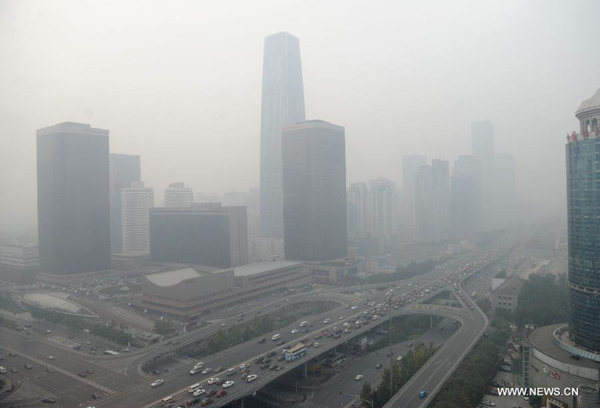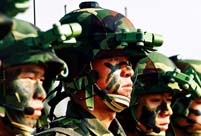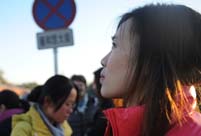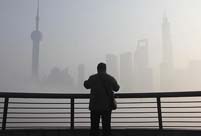 |
| Buildings are blanketed in heavy smog near Guomao Bridge in Beijing, capital of China, Oct. 28, 2013. According to Beijing environment monitoring data, the air quality of central area and southern parts of Beijing is heavily polluted from Sunday night to Monday. (Xinhua File Photo) |
BEIJING, Dec. 17 -- Beijing will add more than 200 automatic observatories and eight meteorological radar systems in the next two years to enhance accuracy of the capital's weather forecasts, said an official on Tuesday.
By 2015, Beijing will complete construction of an all-weather observation network covering both urban and rural areas with the ability to forecast weather accurately down to the township and street level, said Beijing Vice Mayor Lin Keqing at a weather work conference.
The 24-hour forecast accuracy rate for predicting sunny and rainy days will be 90 percent or above, and accuracy of temperature forecasts will be 80 percent or above in 2015, compared with the current 88 percent and 76 percent respectively, according to Lin.
"Beijing will carry out scientific experiments to reduce smog artificially," said Lin, without giving details.
Meanwhile, alerts for rainstorms, thunderstorms and hail will be issued one hour or more in advance, while those for sandstorms, heat waves and smoggy weather will be issued one day in advance, he added.
Currently, more than half of the city's national meteorological observatories have suffered damage, and its only two meteorological radar systems have been affected by nearby high-rise buildings, he added.
Heavy smog has shrouded many major Chinese cities, including Beijing, several times this winter. The smoggy weather has raised great public concern and prompted the government to take more effective measures to tackle it.
 Heavy cargo flights taking off
Heavy cargo flights taking off In pictures: PLA's digital equipment
In pictures: PLA's digital equipment  Americans mark Thanksgiving Day with parades
Americans mark Thanksgiving Day with parades Love searching stories in cities
Love searching stories in cities  Shanghai shrouded in heavy fog
Shanghai shrouded in heavy fog Office ladies receive ‘devil’ training in mud
Office ladies receive ‘devil’ training in mud Changes in Chinese dancing culture
Changes in Chinese dancing culture  Highlight of Mr Bodybuilding and Miss Bikini Contest
Highlight of Mr Bodybuilding and Miss Bikini Contest  Picturesque scenery of Huanglong, NW China
Picturesque scenery of Huanglong, NW China 17th joint patrol of Mekong River to start
17th joint patrol of Mekong River to start The islands where immortals lived
The islands where immortals lived Snowstorms cause chaos for travelers
Snowstorms cause chaos for travelers Special police detachment of Hefei
Special police detachment of Hefei  Weekly Sports Photos
Weekly Sports Photos China's moon rover, lander
China's moon rover, landerDay|Week|Month